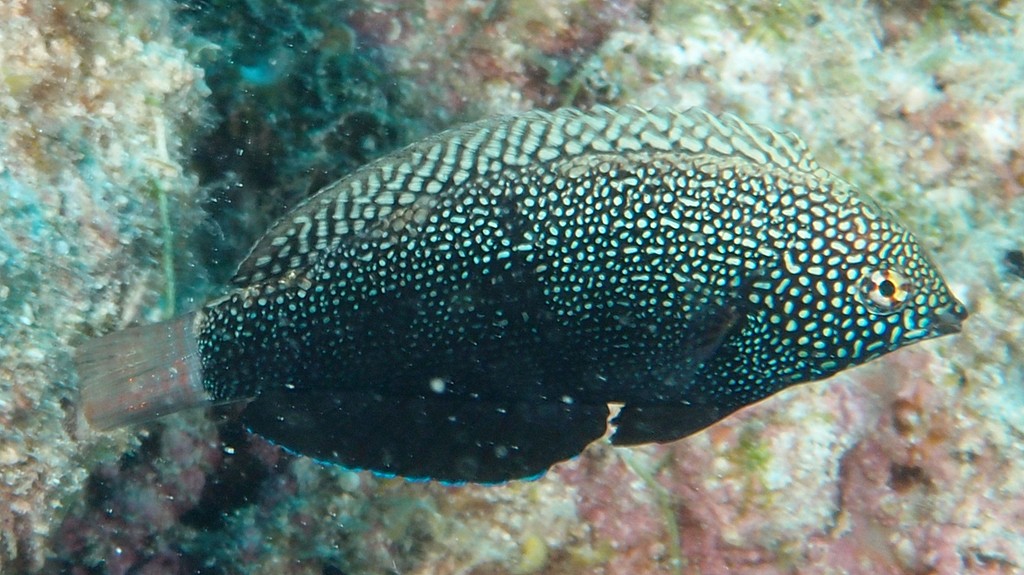MACROPHARYNGODON NEGROSENSIS - (HERRE, 1932)
Actinopterygii (Gigaclass) > Actinopteri (Class) > Teleostei (Subclass) > Perciformes (Order) > Labroidei (Suborder) > Labridae (Family) > Macropharyngodon (Genus)
Black leopard wrasse, Black wrasse, Negros wrasse, Yellowspotted wrasse, labre à points jaune,
Description
Dorsal spines (total): 9; Dorsal soft rays (total): 11; Anal spines: 3; Anal soft rays: 11; Vertebrae: 25. Color in life of black with iridescent blue-green spots on body and light yellow antero-dorsally on head body; head banded. Anterior lateral line pored scales 2-3. Males display with metallic green shiny color that is turned on shortly for the occasion. Max length : 12.0 cm. Depth range 8 - 32 m.
Etymology
Macropharyngodon: from Greek, makros = great + from Greek, pharynx = pharynx + from Greek, odous = teeth.
Distribution
Eastern Indian Ocean and Western Pacific: Andaman Sea and Christmas Island to the Philippines and Samoa, north to Ryukyu Islands, south to northern Australia. Reported from New Caledonia.
Biology
Inhabits lagoon and seaward reefs, in areas of mixed sand and coral. Post pelagic juveniles carried by currents beyond their normal breeding range. They are often in pairs or small loose groups, swimming close to the bottom. When approached, they move up and down in an unusual way that may worry a possible predator. Adults move about in small groups.
Black leopard wrasse, Black wrasse, Negros wrasse, Yellowspotted wrasse, labre à points jaune,
Description
Dorsal spines (total): 9; Dorsal soft rays (total): 11; Anal spines: 3; Anal soft rays: 11; Vertebrae: 25. Color in life of black with iridescent blue-green spots on body and light yellow antero-dorsally on head body; head banded. Anterior lateral line pored scales 2-3. Males display with metallic green shiny color that is turned on shortly for the occasion. Max length : 12.0 cm. Depth range 8 - 32 m.
Etymology
Macropharyngodon: from Greek, makros = great + from Greek, pharynx = pharynx + from Greek, odous = teeth.
Distribution
Eastern Indian Ocean and Western Pacific: Andaman Sea and Christmas Island to the Philippines and Samoa, north to Ryukyu Islands, south to northern Australia. Reported from New Caledonia.
Biology
Inhabits lagoon and seaward reefs, in areas of mixed sand and coral. Post pelagic juveniles carried by currents beyond their normal breeding range. They are often in pairs or small loose groups, swimming close to the bottom. When approached, they move up and down in an unusual way that may worry a possible predator. Adults move about in small groups.
